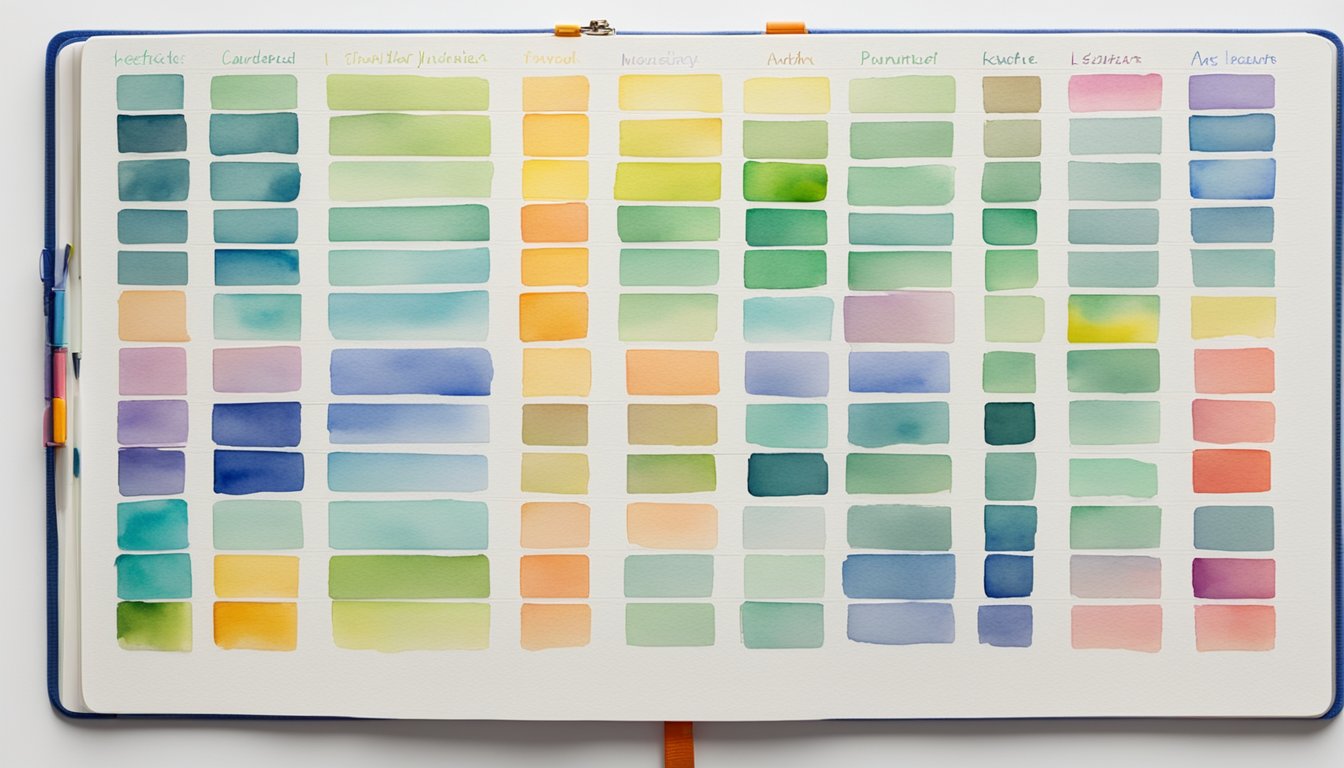Understanding Binders
![A hand reaching for a labeled binder titled "Understanding [Keyword]" on a cluttered desk](https://insuranceglossary.net/wp-content/uploads/2025/03/v2-dc8tn-uabry.jpg)
In the insurance industry, a binder is a temporary agreement providing coverage until a formal policy is issued.
It serves to ensure that you are immediately protected.
Types of Binders
- Round Ring: These are common for holding documents and have lower sheet capacity.
- D-Ring: Provides more capacity and a different page alignment.
- Slant Ring: Also increases capacity and can be easier to open and close.
Common Sizes and Uses
A typical 3-ring binder is designed to hold standard letter-size (8.5″ x 11″) paper.
- 1-inch round ring binder can hold up to 175 sheets.
- 2-inch D-ring binder can manage around 450 sheets.
The 2-inch round ring view binder can be convenient for storing larger documents with pockets for additional organization.
Popular Models
For a sturdy option, the Comix sturdy 2-inch round ring view binder is reliable for regular use.
This binder is ideal for those who need a resilient and spacious organizing tool.
In work environments, a binder with a capacity of up to 450 sheets ensures that you have enough space for comprehensive document storage.
Using an appropriate binder allows you to manage your paperwork efficiently, keeping everything organized and accessible when needed, especially during busy insurance processes.
Binder in Practice

In the insurance industry, having an organized binder is essential.
Organization is key to keeping track of client documents, claims, policies, and regulatory compliance forms.
You can use a Comix 3-ring binder with interior pockets for extra storage needs.
Choose a binder made of polypropylene and non-stick material.
These features help in maintaining the aesthetic quality and durability.
A 4-pack can be useful for different categories of paperwork.
For better functionality, use zipper envelopes within the binder to secure smaller items or confidential documents.
This ensures that nothing gets lost or misplaced.
Maintaining a professional style in your office is important.
A sleek, black binder can complement your decor while fulfilling its purpose.
Using a well-organized binder helps streamline your workflow, improves accessibility of documents, and enhances your overall efficiency.
Related Terms

When discussing binders in the insurance industry, certain related terms are essential for understanding their applications and features.
Here is a breakdown of some of those terms:
Common Types of Binders
- Folder: Often used to group related documents.
- Ring-Binder: A binder with rings to hold punched papers.
- Vinyl Binder: Made from durable vinyl material and often used for business documents.
Key Features
- PVC-Free: Binders without polyvinyl chloride, often preferred for their environmental benefits.
- Assorted Colors: Bindings available in a mix of colors like white, black, and clear.
- Durability: Ratings such as 4.7 out of 5 stars and 5 out of 5 stars for high-quality binders.
Purchasing Options
- Free Shipping: Some vendors provide shipping at no additional charge.
- Save with Pickup Today: Offers savings when you choose in-store pickup.
- Best Seller: Binders that are frequently purchased and highly rated.
Specifications
- Size: Common dimensions include 10.5 x 11.6 x 1 inch.
- 4-Pack Assorted Color: Bundles with multiple colors for various uses.
- Reviews: Customer feedback such as 46 reviews detailing experiences and satisfaction.
Shipping Details
- Arrives Tomorrow: Fast shipping options available on select binders.
- Arrives in 2 Days: Standard shipping providing timely delivery.
Understanding these related terms helps you make more informed decisions when selecting binders suitable for organizing insurance documents.
Frequently Asked Questions
Understanding the use of chest binders and binder folders can help you make informed choices.
Below are the key points and answers to some of the most common questions.
What should be considered when selecting a chest binder for personal use?
When choosing a chest binder, comfort and safety are crucial.
Look for breathable materials like cotton or spandex to prevent overheating.
Ensure the size is correct to avoid discomfort or breathing issues.
How can one organize documents effectively using a binder folder?
To organize documents, consider using tab dividers to separate subjects or categories.
Label each section clearly and make sure the binder has pockets for loose papers.
Use sheet protectors for important documents to keep them safe from damage.
What are the benefits and drawbacks of using a binder with a zipper for school?
A binder with a zipper can keep all your papers secure, preventing them from falling out.
It may also have additional pockets for pens and small items.
However, it can be bulkier and heavier compared to regular binders, which might make it less convenient to carry around.
What safety precautions are recommended when wearing a chest binder?
Never wear a chest binder for more than 8-10 hours to avoid health risks.
Avoid sleeping in your binder and take breaks if you feel any discomfort.
Consult with a healthcare professional if you experience pain or breathing problems.
Which factors determine the best color choice for a binder intended for professional presentation?
For professional settings, choose neutral colors like black, navy, or gray.
These colors convey professionalism and are less likely to distract from your content.
Make sure the binder is clean and in good condition to give the best impression.
How does one choose the right size when purchasing a binder online, such as from Amazon?
Read customer reviews and check the product size chart before buying.
Measure your chest and compare it to the size guide provided.
Consider choosing a slightly larger size if you are between measurements to ensure comfort.






